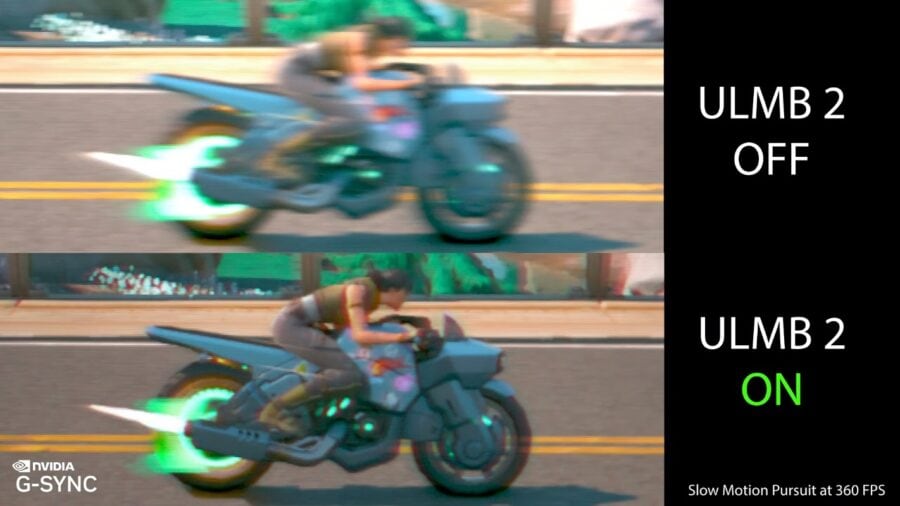NVIDIA plans to improve gaming quality on high-end monitors with an update to Ultra Low Motion Blur (ULMB) technology, reports The Verge. The improved ULMB 2, announced by the company during Computex 2023, promises to provide more than 1000 Hz of effective motion clarity. However, for now, this technology will only be available on monitors with a resolution of 1440p, a frequency of 360 Hz and support for G-Sync.
Previously, gamers had to choose between a higher refresh rate for better responsiveness and less motion blur, two important elements that affect gameplay. Now, with ULMB 2, NVIDIA claims that a monitor with a 360Hz refresh rate can achieve an effective frame rate of 1440Hz. The company notes that to achieve this level of motion clarity without ULMB 2, gamers would need a regular panel with a refresh rate of 1440Hz. However, it is worth noting that this technology still does not work with variable refresh rates.
To understand how this works in detail, it’s worth noting that LCD and OLED monitors display static images until they refresh, creating a blurring effect for moving objects on the screen, similar to how real-world objects appear blurred when move very fast.
Current LCD and OLED monitors use several methods to reduce motion blur, although they are not flawless. Some flash the backlight in sync with the image refresh, mimicking the effect of CRT monitors, while others insert a completely black image between each frame to minimize blur. These approaches can have unwanted side effects, including dimming and flickering.
The ULMB 2, however, aims to address these shortcomings with full refresh rate backlight gating and improved brightness. Instead of displaying the color transition of each pixel with a backlight, NVIDIA says that monitors equipped with ULMB 2 will only illuminate a pixel after its color transition is fully completed.
In addition, the company emphasizes that ULMB 2 ensures the precise use of pixels throughout the panel so that the backlight flashes at the right moment. This reduces the occurrence of “crosstalk” – the problem that causes double images when objects on the display move. ULMB 2 can also deliver up to 250 nits of brightness, which NVIDIA says is nearly double the brightness of the original ULMB.
Although ULMB 2’s performance looks impressive in video demos, it’s not yet widely available for all G-Sync monitors. For now, the feature can be used only after updating the firmware of Acer Predator XB273U F or ASUS ROG Swift PG27AQN monitors with a resolution of 1440p and a refresh rate of 360 Hz.





Loading comments …